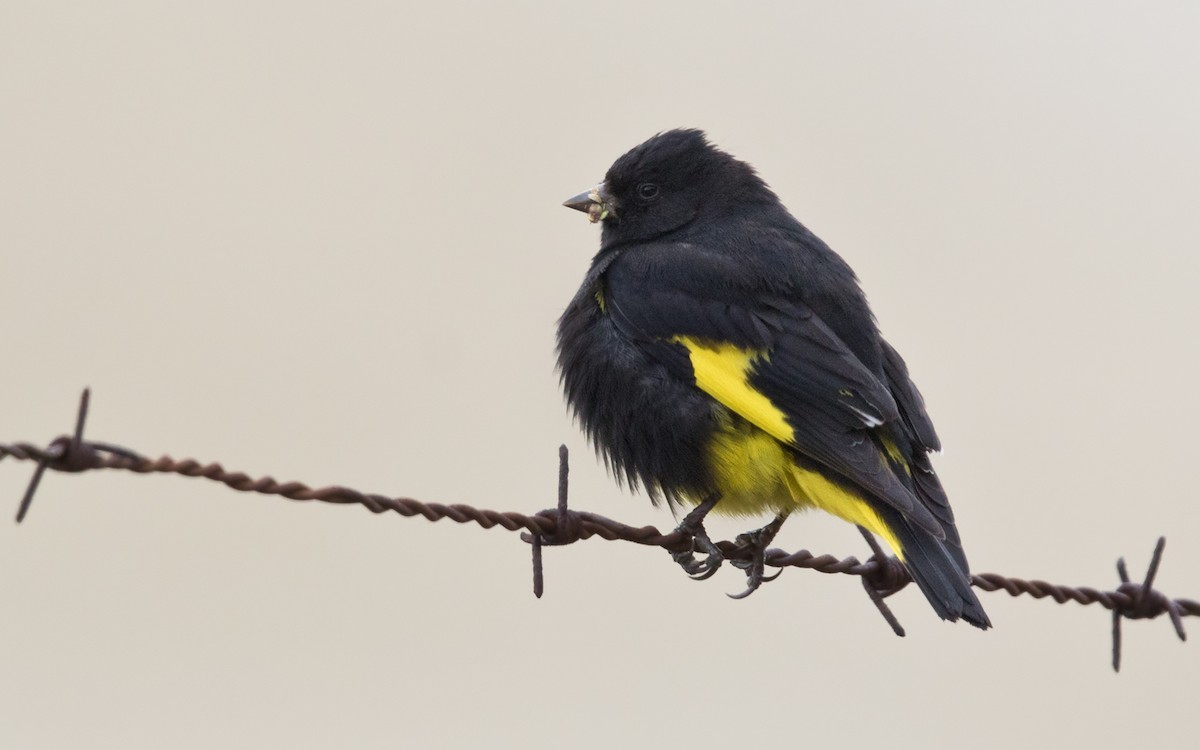Black Siskin
A species of Siskins and new world goldfinches Scientific name : Spinus atratus Genus : Siskins and new world goldfinches
Black Siskin, A species of Siskins and new world goldfinches
Botanical name: Spinus atratus
Genus: Siskins and new world goldfinches
Content
Description General Info
 Photo By Lars Petersson
Photo By Lars Petersson Description
The black siskin grows to a length of about 13 centimetres (5 in). The male is mostly a glossy black colour with the exception of a band of yellow at the base of the primaries, and the base of the tail and the lower belly which are yellow. The female is similar but the black part of the plumage is less glossy and more brownish. The only other bird within its range with which it might be confused is the yellow-rumped siskin (Spinus uropygialis). When stationary they are easily distinguished, but in flight the black siskin displays various patches of yellow plumage on its rump and on the wings which enhances the similarity. 
Size
13 cm
Nest Placement
Tree
Feeding Habits
Black Siskin primarily consumes seeds from ground-level flora and occasionally insects. These birds typically forage on the ground or within low shrubs, doing so in pairs or small flocks, which can grow during the non-breeding season. Unique gatherings include mixed-species flocks featuring S. crassirostris and S. xanthogastrus.
Habitat
The black Siskin resides primarily in the lofty Puna grasslands of the Andean highlands, typically between 3,500 and 4,500 meters above sea level. Its habitat encompasses rocky slopes, ravines, and tussock grasslands with scattered shrubs. Additionally, these birds are adaptable to lightly vegetated stone hillsides and areas near Andean settlements.
Dite type
Granivorous
General Info
Feeding Habits
Bird food type
Distribution Area
This is a bird of the high Andes Mountains in South America. Its range extends from central Peru and northern Chile to western Argentina. Its height range is 3,500 to 4,500 metres (11,500 to 14,800 ft) but at the southern end of its range it occurs at slightly lower altitudes. Its typical habitat is rocky slopes and ravines, and the tussocky grassland with low shrubs that occurs in the Puna grassland ecoregion. It also occurs around habitations. It is often seen in pairs or in small flocks, sometimes with other species of finch, and generally forages on the ground or in low bushes. 
Species Status
Not globally threatened.

 Photo By Lars Petersson
Photo By Lars Petersson